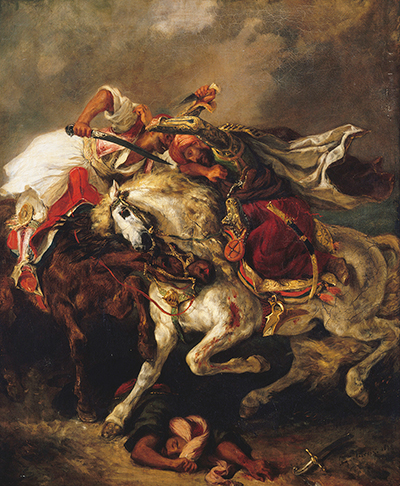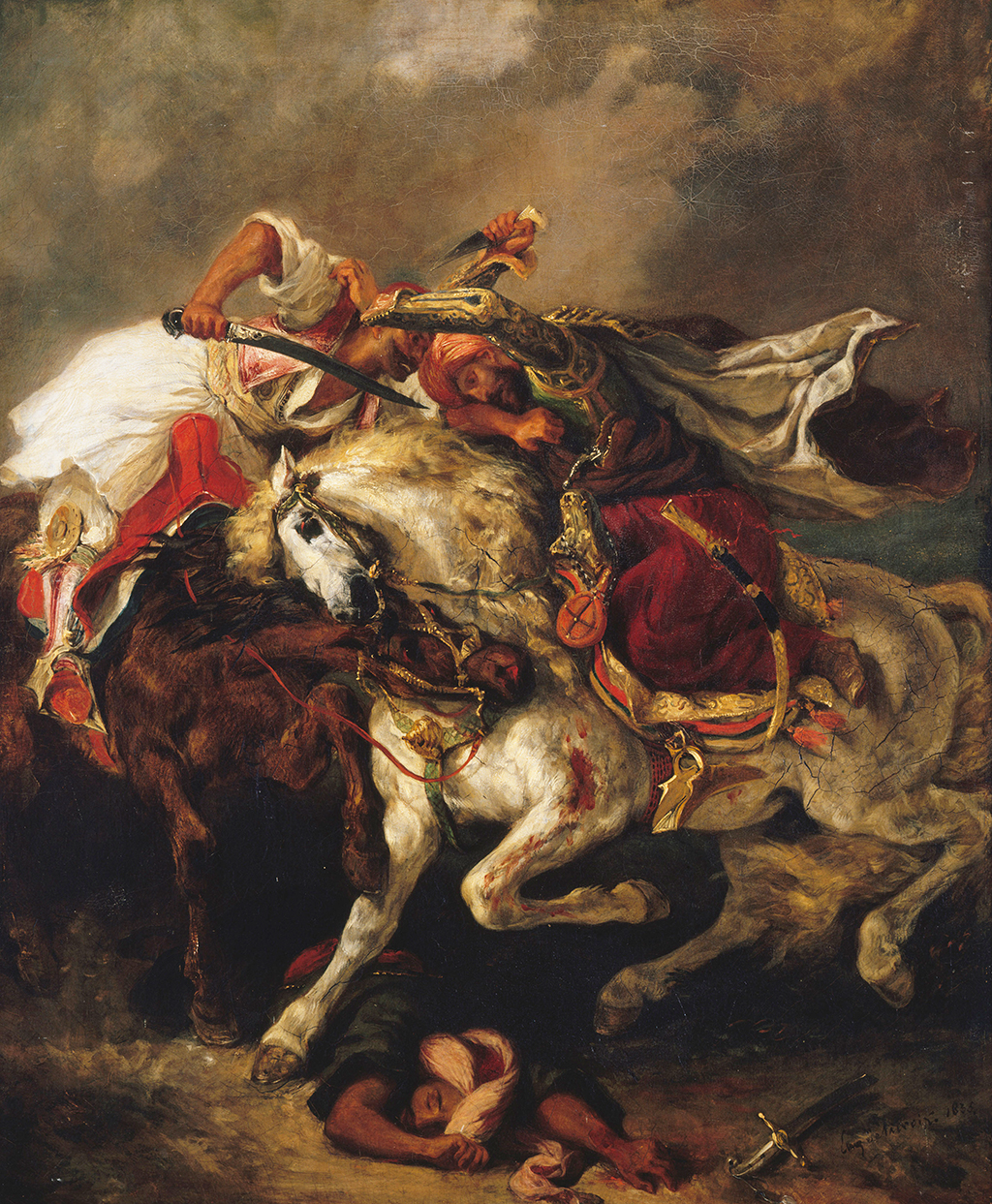This theme was taken on several times by artist Delacroix, who produced three major paintings in 1826, 1835 and 1856. He was a keen Orientalist and studied islamic art and architecture, which helped inspire and inform a whole series of paintings and drawings.
Lord Byron produced a poem in 1813 entitled The Giaour, and that would be the inspiration behind this series of work. The tale describes how Giaour would ambush and kill Hassan, the Pasha, in a scene of drama and chaos. As usual, there is love involved in this tragedy, and Hassan was essentially receiving retribution for killing one of his own slaves because they were desired by Giaour. Delacroix loved English literature and studied it intensively over one period of his career, with this influencing a large number of his paintings. He would also go to visit the country for an extended period where he also befriended a number of fellow artists and studied some of the artistic techniques unique to the UK. Delacroix was someone who liked to re-use themes and stories from time to time, but to do so over a period of three decades, as here, was particularly unusual and perhaps illustrates just how much he enjoyed the original poem.
This version is perhaps the most brutal, with all other visual information removed so that the two soldiers can be expressed in extraordinary detail. Set against a dark sky which sets a mood of danger and sadness, these two warriors grapple for victory. One displays a menacing sword and attempts to gouge his opponent with it, whilst at the same time, their horses clash, as if fighting amongst themselves too. The clothing detail is, again, breathtaking, and Delacroix is known to have studied the varieties of cultural clothing in detail in order to be as accurate as possible. He was also highly skilled in this genre, as he was in the depiction of horses and so this theme was entirely suitable for him. Despite the horrors of war, or in this case a private battle in search of revenge, there is still a beauty to this piece because of the way in which the scene is delivered by Delacroix.
This painting from 1835 can now be found at the Petit Palais in Paris, which is one of the best venues for art within this famous city. Their collection has steadily grown over many centuries and they particularly specialise in painting and sculpture from earlier art movements. This painting from Delacroix is mentioned amongst their list of masterpieces, alongside the likes of Sunset on the Seine at Lavacourt, Winter Effect by Claude Monet, Portrait of Sarah Bernhardt by Georges Clairin, Ugolino by Jean-Baptiste Carpeaux and Jérôme de La Lande by Jean-Honoré Fragonard. They focus most on French art, of course, but there are also regular exhbitions that address themes outside of their permanent collection.





